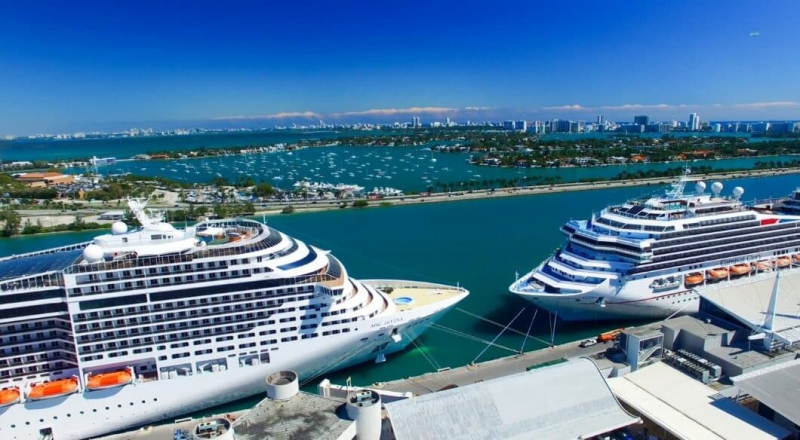Imagine: azure waves gently kissing ivory beaches, seemingly limitless feasts under starry skies, and the allure of adventure humming across vast oceans. For American travelers, the charm of cruises persists—perhaps even grows stronger.
Indeed, a recent study, conducted by the American Automobile Association (AAA) in partnership with Tourism Economics (an affiliate of Oxford Economics), projects approximately 21.7 million U.S. passengers embarking on cruises in 2026. Interestingly, that’s about a million more than the estimated count for 2025, reflecting a solid 4.5% increase and marking what could be the fourth consecutive year of record growth. In a world still recovering, or at least changed, after the pandemic and seemingly craving escape, cruising doesn’t just survive; it positively thrives.
Larger Vessels, Bolder Voyages
One might ask: What is the underlying cause of this ongoing surge in popularity? AAA suggests something akin to a “fleet effect,” which is essentially a convergence of new ship deliveries and strategic modernizations impacting the industry. Shipbuilders seem to be continually refining their approach to ship size, onboard features, and destination appeal, seemingly to ensure itineraries offer compelling experiences. In the realm of luxury travel, smaller, more intimate ships—characterized by their sleek design—are increasingly visiting the fjords of Northern Europe and the sun-drenched coasts of the Mediterranean. They seem to be catering to American cruisers seeking serenity rather than spectacle.
In contrast, within the United States, the mega-vessels generally hold sway. These massive ships—essentially floating cities, complete with water slides, Broadway-style shows, and sometimes even zip lines—tend to dominate U.S. waters, particularly in the Caribbean. These behemoths aren’t merely popular, they are very often revenue drivers, appealing to families and first-time cruisers with compelling offerings that combine convenience with excitement.
A New Demographic Mix Onboard
The days of cruising being perceived as a pastime exclusive to retirees may be fading. The market is expanding, attracting younger adventurers and families, while still catering to loyal cruisers. Indeed, repeat passengers, providing consistent revenue, remain the backbone of the industry, ensuring high occupancy and steady income.
Demographic data paints the whole picture: Though roughly 65% of American cruisers are over 55, a vibrant 27% are between 25 and 54. It’s a blend of millennials seeking “Instagrammable” experiences and Gen X parents planning trips. Additionally, the increasing number of cruisers under 35—7% of the total—should not be ignored; they are drawn to cruising by social media content and tropical destinations. This demographic diversity suggests sustained demand.
Click here to preview your posts with PRO themes ››
Florida’s Ports Attract Travelers
There are no significant shifts here; just ongoing reliability. Florida’s main ports—Miami, Port Canaveral, and Fort Lauderdale—are still primary departure points, channeling travelers toward ocean voyages. This represents logistical convenience, with airports close to docks, simplifying the process of getting on board.
And the destinations? Predominantly, the Caribbean, capturing around 72% of American cruisers. The appeal lies in sunny islands, snorkeling, and the ease of island hopping. AAA also highlights the popularity of shorter cruises (three to five nights), which offer professionals a quick getaway without extensive planning. For cruise lines, this may be a win-win scenario—more frequent trips translate to higher ticket sales and better use of mega-ships.

Global Trends Elevating the Industry
Looking at the big picture, the U.S. trend is part of a global increase. The Cruise Lines International Association (CLIA) reported 34.6 million global passengers in 2024 and expects 37.7 million in 2025, mirroring the U.S. growth. North America is playing a key role, with consumer demand and port capabilities supporting industry growth.
This assessment seems to be supported by booking data. The cruise industry is breathing a sigh of relief, marked by new construction and growth, especially when you consider the uncertainty of the last few years. In many cases, AAA’s report highlights the underlying strength of cruising, supported by both new and innovative ships and its broad appeal. This positions the industry as a very reliable part of the overall travel sector.
Positive Outlook Is Important
The projections for 2026 should be viewed as a signal to book voyages now. The cruise industry has evolved to cater to a wide variety of preferences, suggesting the perfect trip exists for everyone – from first-time travelers considering the Eastern Caribbean to experienced cruisers interested in the fjords of Scandinavia. This growth also has economic benefits. Generally speaking, more jobs in shipyards, increased spending in port towns, and a positive economic impact on coastal communities.
The future is clear: American cruising isn’t just reaching its peak, but is setting course for unprecedented growth. Now is the time to pack, finalize your playlist, and prepare to embark on a cruise. The ocean is waiting, more accessible than ever.


